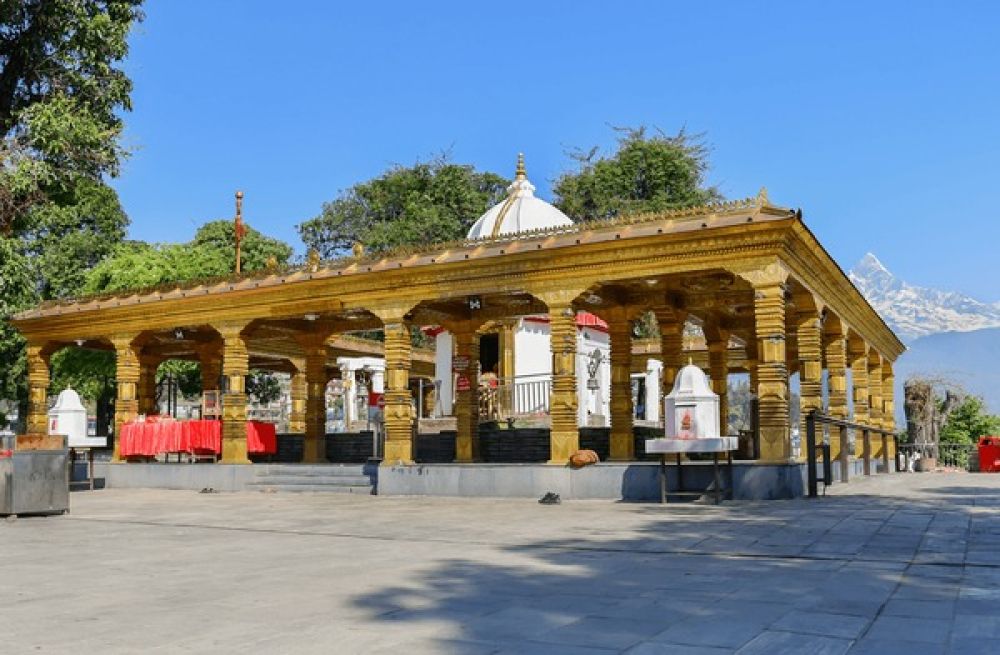

Lying in the heart of the bustling city of Pokhara, the Shree Bindhyabasini Temple stands as an emblem of faith and tradition. The temple, dedicated to the Hindu goddess Bhagwati, a manifestation of Parvati, has been a pivotal spiritual site for both locals and tourists alike.
The Shree Bindhyabasini Temple is believed to have been established in the 17th century and has served as a beacon of religious activities ever since. It is situated on a small hillock called Bindhyabasini hill or Mohariya Tole and is considered to be one of the oldest temples in Pokhara. It was constructed by the Kaski Kingdom, which makes it a significant monument in the history of the Pokhara valley.
Traditionally, the temple was an important stop for traders traveling between India and Tibet. They would offer prayers for safe passage and successful business dealings, thereby integrating the temple into the fabric of pre-tourism trade routes.
With the growth of Pokhara as a touristic hotspot, the Shree Bindhyabasini Temple has seen a flux of visitors eager to witness the rich cultural heritage and panoramic mountain vistas that the location offers. The temple's popularity among tourists began to rise significantly in the 1960s and 1970s as Nepal opened its doors to the international community and the Annapurna Circuit became a world-famous trek.
The temple premises pulsate with activity during major Hindu festivals like Dashain and Navaratri. Animal sacrifices are a common ritual associated with the temple, although tourists generally come for the scenery and the spiritual ambiance rather than the ceremonial specifics. Visitors also enjoy the bustling market that sprawls around the base of the temple, selling everything from local handicrafts to ritual paraphernalia.
In recent years, the focus of tourism at the Shree Bindhyabasini Temple has broadened. There is a growing emphasis on sustainable and responsible tourism, with many visitors seeking deeper cultural exchanges and educational experiences. The rise of digital media has also made it easier for potential tourists to learn about the temple, leading to a steady increase in footfall.
Adventure tourism has soared, with many trekkers beginning or ending their journeys to the Annapurna range in Pokhara, and making time to visit the temple as well. Additionally, there is a trend toward combining spiritual wellness with travel, attracting tourists to the temple for meditation and yoga sessions amidst the serene environment.
Pokhara is well-connected by air and road, making the Shree Bindhyabasini Temple easily accessible for international and domestic tourists. The temple itself offers ample space and facilities for tourists, including parking and clean premises. Local government initiatives have further streamlined transport routes and developed infrastructural projects to support the growing tourism industry.
With its vibrant history, cultural richness, and breathtaking scenery, the Shree Bindhyabasini Temple continues to be a cornerstone of Pokhara's allure. It encapsulates the tranquility of Nepalese spirituality, the warmth of its people, and the untamed beauty of the surrounding landscape. As tourism trends evolve, the temple remains a timeless testament to Nepal's cherished heritage.